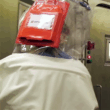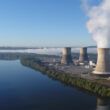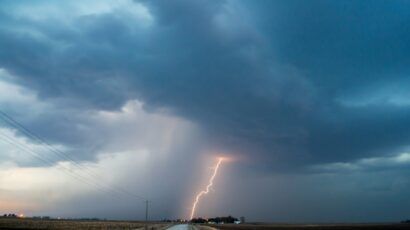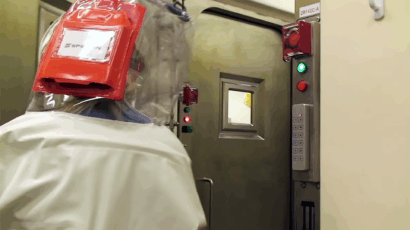Not an ICBM? Still an open question
August 29, 2017
Ted Postol, Markus Schiller, and Robert Schmucker’s analysis of the capability of North Korea’s Hwasong-14 missile, based on the July 28 test of that missile, raises several interesting and important issues. Their paper, however, is not the final word on the missile’s capability.
The kinematic approach. One can assess the capability of the Hwasong-14 missile in two ways. Both approaches reveal interesting information, but both have their limitations.
The first approach is based largely on physics alone. It starts with the highly lofted trajectory that North Korea’s missile flew on July 28 and calculates how far the same missile, with the same (unknown) payload, could travel if it were flown instead on a flatter, more standard trajectory. That distance can be determined by numerically integrating the equations of motion of the missile, including the thrust of the engines, the force of gravity, and atmospheric drag.
Doing this correctly requires taking into account the physics of the missile during its boost phase—the few minutes, early in flight, when the engines generate thrust. In particular, one must take into account that the missile’s engines will burn out at a significantly higher altitude on the lofted trajectory than on the more standard trajectory, resulting in larger “gravity losses” and a lower burnout speed. An accurate assessment of range therefore requires taking into account the missile’s higher burnout speed, as well as its lower burnout angle, if it is flown on the standard rather than the lofted trajectory.
By “standard” trajectory, people typically mean a “minimum-energy trajectory” (MET), which produces the maximum range for a given speed and altitude at the end of boost phase. That condition determines the specific loft angle the missile must achieve at burnout. For short-range missiles, the optimum angle is close to 45 degrees from the horizontal. The angle decreases to about 22.5 degrees for a missile with a range of 10,000 kilometers. Calculations show that the missile launched on July 28 would have a range of about 10,400 kilometers if flown on an MET. A missile with a range of 10,400 kilometers can reach major cities on the US mainland from North Korea.
In the article by Postol and his co-authors, the title for Figure 1 is misleading. The title mentions maximum ranges for missiles, but the figure itself does not show maximum ranges. The authors calculated the range for the July 28 trajectory with a 30-degree burnout angle rather than 22.5 degrees—so its range is shorter than that for a maximum-range trajectory.
This range calculation is relatively insensitive to assumptions about the missile since it compares the range of the lofted trajectory with that of the same missile carrying the same payload on an MET trajectory. The limitation is that analysts don’t know what payload was carried by the missile that North Korea launched on July 28. If it carried a payload comparable to the mass of an actual warhead and re-entry vehicle, the above calculation is an accurate assessment of the missile’s ability to carry a warhead to intercontinental ranges. If, however, the July 28 missile carried a lighter payload, the range of the missile with an actual warhead would be shorter.
Modeling the missile. The second approach to determining the capability of the Hwasong-14 is to develop a detailed model based on what is known about the missile and then calculate how far such a missile could carry payloads of different ranges. Doing so requires knowledge of and assumptions about the technology used in the missile. This is the approach that Postol and his co-authors take in their paper. Other models have also been put forward.
These analyses are useful in showing the effects of different design choices. However, they must be viewed with caution, especially in a case such as the Hwasong-14, since many things about the missile are unknown. Different assumptions about the values of various parameters can produce significant differences in the capability of the resulting missile model, and it is important to look at the results’ sensitivity to changes in these parameter values.
Before looking at the sensitivity of the Hwasong-14 model to various parameters, it is important to note two things about the range-payload curves in Figure 2 of the article by Postol and his co-authors. First, the vertical axis is incorrectly labeled. Rather than “throw weight,” it should be labeled “warhead mass,” to accord with the figure’s title. “Throw weight” includes the mass of the warhead and the re-entry vehicle. The authors do include the additional mass of the re-entry vehicle in calculating the curves in the figure, but it is worth clarifying what is actually plotted on the vertical axis—to allow comparison of these results to other range-payload curves.
Second, the authors have told me that the curves in Figure 2, like those in Figure 1, assume that the missile is flown on trajectories with a minimum burnout angle of 30 degrees rather than MET trajectories. Recalculating the curves using the MET values of the burnout angle leads to ranges that are longer by up to several thousand kilometers at long ranges. For example, for a 500-kilogram payload, using the MET burnout angle increases the range from about 7,200 kilometers to about 9,100 kilometers.
Information about the Hwasong-14 missile comes from analyzing photos of the missile and videos of the launch. This information allows one to estimate the size and mass of the missile, the type of propellant, and the initial acceleration. The various models proposed so far for the Hwasong-14, however, have inferred substantially different dimensions for the missile, which leads to significantly different mass estimates. Differing mass estimates, coupled with measurements of the initial acceleration, lead to different estimates of the thrust of the missile. Moreover, other key parameters related to the missile cannot be determined directly from observation.
The mass of the warhead and re-entry vehicle that North Korea could develop is an ongoing topic of discussion among experts. While people make educated guesses about the mass, there is no consensus. Postol and his co-authors say they believe it is highly unlikely that North Korea could make a deliverable weapon (excluding the re-entry vehicle) lighter than 500 kilograms. Other experts have told me that one of the nuclear weapon designs North Korea may have gotten second-hand from China, via Pakistan, has a mass close to 300 kilograms. Different assessments on this question have a big effect on the range of the missile.
Two other important missile parameters are the fuel fraction of the missile’s stages—that is, what fraction of the stage mass is propellant rather than structure—and the engines’ specific impulse, which is related to the thrust the engine can produce. For the first stage, the authors assume a fuel fraction of 90 percent and a specific impulse of 260 seconds. Using these values gives a range of 7,900 kilometers for a 600-kilogram payload and 9,100 kilometers for a 500-kilogram payload (assuming an MET trajectory).
Other values for these parameters can produce significantly different ranges, however. For example, North Korea is believed to have acquired more advanced machine tools in recent years, which could allow it to build lighter fuel tanks. Moreover, Postol and his co-authors assign a value to the specific impulse based on an analysis of a Soviet engine that some people believe is used in the Hwasong-14—but others believe that the Hwasong engine simply drew on a Soviet design and may have different characteristics.
If instead of the assumptions above, North Korea was able to build the Hwasong-14 with a first-stage fuel fraction of 91 percent (rather than 90 percent) and a specific impulse of 270 seconds (rather than 260 seconds), then, with a payload of 600 kilograms, the missile would have a range of 9,700 kilometers (allowing it to reach Los Angeles and other West Coast cities). With a payload of 500 kilograms, it would have a range of 11,300 kilometers (allowing it to reach Chicago). Such a missile would unambiguously be an intercontinental ballistic missile.
This example illustrates how differences in reasonable assumptions for the parameter values describing the Hwasong-14 can affect the calculated capability of the missile.
Still an open question. The kinematic calculation discussed above shows that the Hwasong-14 is able to reach a range of 10,400 kilometers, but with an unknown payload. The other approach—modeling the missile based on evidence from the launches and on educated guesses about the values of key unknown parameters—can provide more information on the range of the missile for a specific payload. However, since the assumed parameter values will significantly affect the range estimates, it is important for people modeling the missile to discuss in some detail the rationale behind their choice of values, as well as the sensitivity of range estimates to uncertainties in the values.
Unfortunately, at this point it is too early to rule out the possibility that the Hwasong-14 could carry a nuclear weapon to large cities on the US mainland.
David Wright
Codirector of the Global Security Program
EXPERT COMMENTARY
Union of Concerned Scientists













